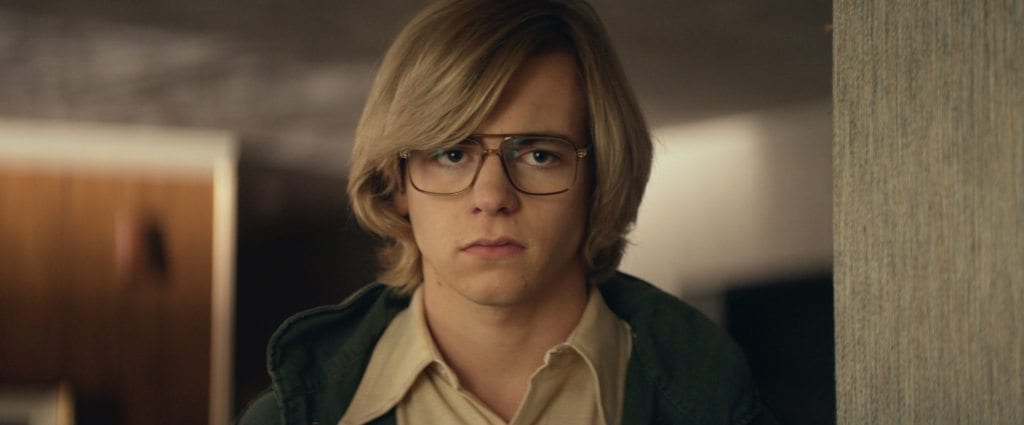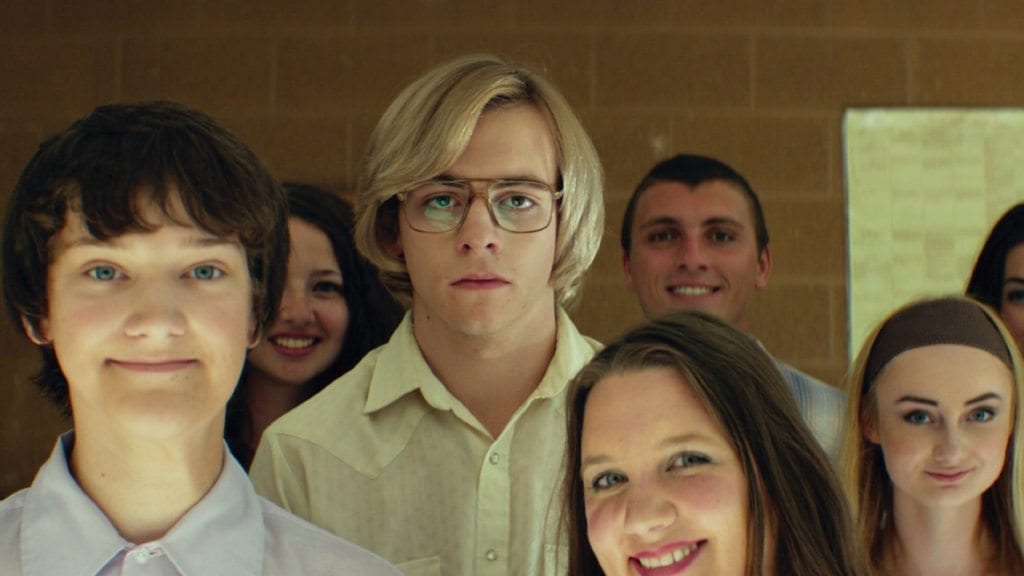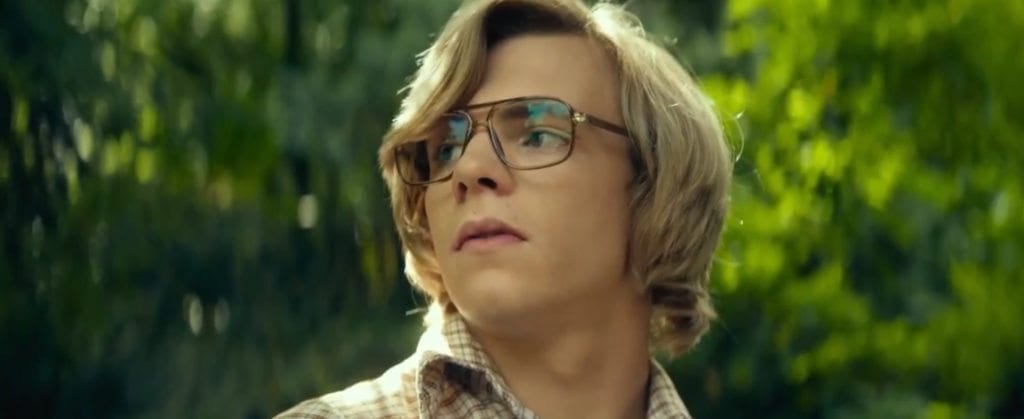
Getting deep with Marc Meyers on ‘My Friend Dahmer’
We here at Film Daily were more than happy to have director Marc Meyers take time out of his busy schedule to chat to us about his latest film My Friend Dahmer. In our review, we found it to be a spellbinding absurdist film that charted the young life of a serial killer in the making. Go check out our review if you haven’t already.
We asked a few questions to Meyers about the film and why he found the material so intriguing. He had plenty to say about that and more.
FD: My Friend Dahmer is an adaptation of John Backderf’s graphic novel recounting his time in high school with convicted serial killer and rapist Jeffrey Dahmer. What attracted you to this project, and how did it land on your lap?
Marc Meyers: I thought that the concept of a “portrait of a serial killer” as a young boy could be an interesting starting point for a film. I was also looking with my producing partner at graphic novels, knowing that the quality of storytelling in naturalistic graphic novels could be a very interesting place for source material. It was either subversive or had a unique take on some aspect of life. And, so when I came across the book it was the synergy of the two things.
I then looked into the book and we made sure that we had the option for the film, because it was blending those two things into a real story about a real, infamous person from history. So, I didn’t come to it like a student of serial killers or true crime; I came to it from these other, sort of organic places.

What was the experience like for you adapting a graphic novel? Was it harder or easier to direct?
Well, I think there’s a knee-jerk reaction in the very beginning that some people will see the word Dahmer and think it’s going to be a horror film, that we’re exploiting the identity. But once they either got into the book, and then later the script, they realized that this is a unique take on an infamous character in history through a first-person account of a friendship in high school.
And at that point, people certainly realize there isn’t a story much like it out there. So, it was really just getting beyond people’s early prejudices, I suppose.
Was it hard to pull the finance together for a film that depicts such a controversial subject?
Well, for the reason I explained, maybe a little bit. I think we realized at some point that we had to get financing from some unique places. And because the traditional avenues of trying to get it set up with either a studio or a mini-studio seemed like they could just be laborious and we felt a certain amount of urgency, we decided that we had to look for other kinds of investors. So, it was challenging. But it’s hard to know how hard other movies are, at the same time, to finance. They’re all hard [ha,ha,ha].
My Friend Dahmer refrains from depicting any of Dahmer’s murders. Despite this, it’s an incredibly dark film. Why would you say that is?
I think there’s this fear about when and how he could snap and how his proclivities could slip out of control. So you’re constantly fearing where that occurs. I had the faith, which is also suggested in the book, that it is even more dark and sinister and compelling if a lot of stuff is swirling around in the viewer’s mind while they’re watching the film.
You may not see the most gross of all crimes occurring on screen, but in your mind, as a viewer, you know that it’s possible by the character that we’ve created and you understand what he may do. Hopefully that gives it a more lasting impression on people, because we’ve left some things to the imagination.

Was it challenging to focus solely on the source material (in this instance the book), what with Dahmer’s atrocities being so well known? Did you do additional research on the future crimes that he would later commit, or is that something you strived to avoid?
Everyone can very quickly look on Wikipedia and find out who Dahmer was and what he became, right? I stayed very loyal to the book, which was my source material. I kind of consider it my bible for the adaptation.
I had a couple of days with the author when he was able to take me almost panel-by-panel through the book and show me the real-life locations that he had illustrated, and through this, I could enter a little bit deeper into his own personal experience. It was the author and the book that were really my guideposts or my source for finding a film version out of all that information.
How do you think the families of Dahmer’s victims will respond to the movie? Is this something you’ve thought about much?
There’s a book that preceded the film, and I’m basing it off that book which was already out there in the world. So, fortunately, there was a trail that had already been blazed, and I was just following in its footsteps. I only spoke to the author and met with some of the other friends that knew Jeff in high school who were part of the Dahmer fan club group.
I knew that the book was so deeply researched through public records, FBI stuff, and first-person accounts of what it was like to be his friend in high school. So, I didn’t look at any other books or talk to any other family members.

The era of the 1970s is captured perfectly in the film – a true snapshot of a moment in history. Was it a challenge to recreate this time, and how did you go about it?
It started by filming it at Jeffrey Dahmer’s actual childhood home, something I was adamant about, and that determined the rest of of the production was going to also be around where he actually lived.
So, we had to find a high school that resembled a high school from the 70s, and that was a long, arduous hunt to get approval to find a high school in that part of Ohio that we could film in. Once you have those two locations and the woods, which haven’t changed much since then, then the production design could really color and complement these environments to bring them back into the 70s.
I wasn’t trying to heighten the experience of the 70s; I wanted it to be as authentic as possible, so we had a lot of actual photography from the era we referenced to make sure that we weren’t giving any kind of cartoonish quality. We really just wanted it to be a period piece, a kind of time capsule. Even the cars: just finding the right cars that could still run that were from the era and the way they sounded, that did a lot.
I also had to make sure all the leads, and as many extras as possible, did not cut their hair. The moment they got hired, it was the first thing we told them: don’t cut your hair.
Putting aside what most people know about Dahmer’s later years, the film makes us care about him. Was this intentional? Did you find yourself caring for the troubled central character as well?
As a director and also a writer, I have to connect to all of the characters and understand them to the best of my ability: how they might be feeling at any time, to what their motivations are. That’s kind of the gig, and what I have to do. Just to understand him was my role, I suppose. Did it change me? The movie changed me as a director, but I think I’m the same human being I was at the beginning.
How exactly did your time on My Friend Dahmer change you as a director?
It was my fourth film and my first that taps into the genre community and plays with some genre techniques. And also, I had more resources on this film than I had had before. So, I really enjoyed making that step and realized how effective, interesting, and fun it is to work in that genre space. That’s not to say that I want to make a frightening, scary ghost story or jump-scare kind of horror film next. But, just to be a part of the genre community is really exciting.
Though none of Dahmer’s crimes are depicted in the film, details of them are listed in captions before the end credits. What made you include these?
In the final image of the movie you understand what he’s capable of doing, and so it’s no secret to anyone the monster that he became. I just told the story before the story. It’s as if the viewers now understand Jeff in embryonic form. The audience then all collectively need to realize that the teenager that they just got to know went on to such far, horrible extremes that we just needed to put those details at the end to connect the film to what he became.

It’s incredibly clear that Dahmer was a charismatic character. If the right support system had been in place, could you see his life having taken a dramatically different path?
It’s hard for me to say; I’m a dramatist. What I try to do is portray the forces, both personally and around him, that contributed to the man he would one day become. I am not someone who can give a diagnosis, nor was the movie ever intended to give one and if anyone is looking for that, then they’re looking in the wrong place. I created a story, not a psychiatric evaluation.
So it’s hard to give you an answer to that. But I will say that you have to remember that in the 70s, when someone was misunderstood, there was no internet, there wasn’t cable news, and there wasn’t the progressive, thoughtful society that we have now that may reach out nowadays to give him someone to talk to. So, it’s hard to really know what he could have become, what else he could have become.
Let’s talk about the so-called “Dahmer Fan Club”. Do you consider them friends, bullies, or both?
I consider them friends and bullies. I think that teenagers sometimes do things that are cruel, but they’re not even aware that it’s cruel – that’s what it is to be a teenager. Sometimes you’re unaware of the insensitivities you have to other people or your peers. But they were friends, too. So it’s a little bit of everything and that, I think, is the core of what this movie is about. How well do you really know a friend?
Right, like how most of Dahmer’s classmates didn’t expect he’d become the serial killer.
Right. I mean, that’s part of it. That was a nugget of truth, something that I was aware of. That helped and also contributed to our approach to the film. You know, we were making a high school movie, where one of the kids would one day become a serial killer, but he was still in high school. He was just another student, though troubled and leaning on alcohol that drowned out his thoughts. He was still just another kid in the hallway.
You have dubbed My Friend Dahmer a “cautionary tale”. Could you elaborate on that a bit further?
What makes the movie relevant today is, I believe, the fact that it shows the inner demons of a young, misunderstood, and troubled white male in an environment where the friends, family, community, teachers, and neighbors all in one way or the other missed the signs. And by him slipping through the cracks and everyone missing the signs, the door to his evil proclivities stayed open and wasn’t caught.
Unfortunately, Dahmer isn’t the first nor the last troubled young white male who has gone on to do some horrible, monstrous things. Even though it’s from our past, it’s a cautionary tale, in the way we may look at a troubled, lonely, and bullied young kids nowadays.
What’s next for you? What would you like to work on after you’ve moved on from My Friend Dahmer?
There are a couple areas that I’m really looking into. I mean, I really like the graphic novel space. I thought it was a really fun process to interpret that sort of visual book and so, I’ve been looking at a few other books that I could adapt next.
I loved the idea of working on a real person from history, be it well-known and successful or infamous. So, I’m looking at a couple of stories about real people, and I’m also just finding ways to work with a story that plays with the genre devices again, because I really enjoyed that. I think that audiences today have a genre state of mind per se.



